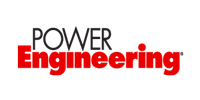
Driven by an ever-increasing world population as well as global economic growth, our energy needs have been rising rapidly, peaking 113,000TWh in 2017 according to the International Energy Agency. The impact of this growth on the environment and well-being of society is becoming more apparent, intensifying the need to decarbonise the transportation and power generation sectors – the two highest polluting sectors in the European Union (EU).
Electromobility has become the prevalent solution for the decarbonisation of the transportation sector, with sales of EVs increasing by 60% in the last two years. In the power generation sector meanwhile, the harvesting of wind and solar is gaining pace, with a quarter of global electricity coming from renewable energy sources.
For these solutions to reach their full potential, they need to be coupled with efficient energy storage technologies. The performance of lithium-ion (Li-ion) batteries has increased tremendously as a result of significant investments in R&D; energy density has tripled since 2008, while cost has reduced by close to 85%. Still, further research is needed to decrease levelised cost of energy (LCOE), and ensure that the production and use of batteries does not generate a negative impact on the environment.
- Find alternatives to scarce electrode materials to improve energy density and decrease the impact on the environment and society
Today’s batteries include REE (Rare Earth Elements), CRM (Critical Raw Materials), and other “sensitive” materials. The most crucial elements are perhaps Cobalt (Co), Nickel (Ni), Manganese (Mn), and Lithium (Li), due to their importance in the battery’s final electrochemical performance.
The EU’s Joint Research Centre estimates that demand for these materials will grow by up to 2,500% from 2015 to 2030, creating a scarcity issue. The fact that most such elements are unevenly distributed around the world does not make things easier either; one-third of nickel and lithium used in batteries globally are mined in China and Chile respectively, while two-thirds of cobalt supplies are sourced from the Democratic Republic of Congo, according to the European Commission. This creates significant supply chain risks and contributes to the huge short- and long-term price volatility. Adding to that is the questionable impact on the environment and society from the sourcing of such materials, with most infamously, the mining of cobalt in the Democratic Republic of Congo using artisanal mines and child labour.
read more











